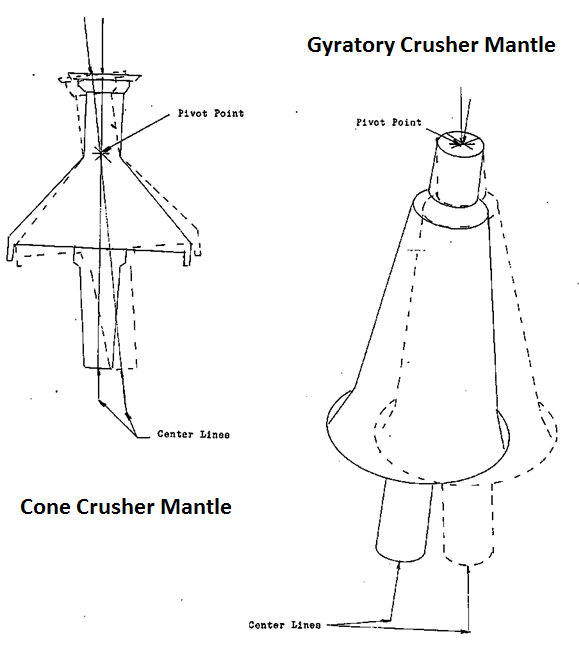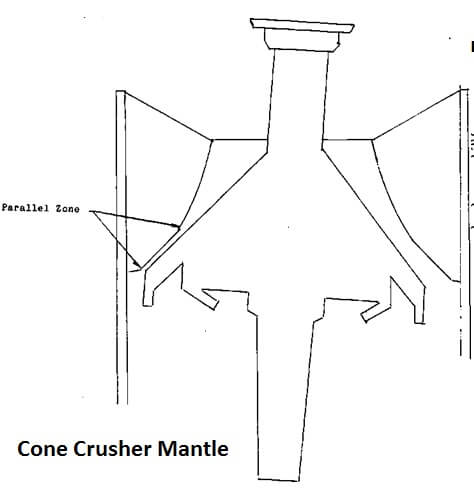
Any of you that are at all familiar with the Gyratory crushers and Cone Crushers that the former are used as Primary crushers will probably note many similarities between the types. Each use a cone shaped crushing surface, and the same principal in the eccentric is employed to develop the crushing action required.
The difference between the two is first the speed that the mantle travels while crushing the ore. A primary revolves at 100-200 R.P.M. While the Secondary and the Tertiary crusher’s travels between 500-600 R.P.M. This difference in the speed results in a HAMMERING type crushing action over the SQUEEZING type employed by the primary.
The other most noticeable change is the crushing action of the mantle. In the Gyratory all the movement is in the bottom of the crusher mantle. This is due to the angle that the main shaft is on. The greater angle of the cone crusher puts the pivot point below the distributor plate. While the pivot point for the gyratory crusher is at the spider cap. This difference in the pattern of gyration has a purpose.
The primary crusher produces a product that is gauged by the size of the open side of the mantle. This is because the slow speed of the gyration allows a high percentage of material to fall through the larger opening without being crushed by the smaller opening. With the cone crusher however the gyration has a greater arc and an equally greater speed. If we look at a profile of the crushing surface we will see an area of the two surfaces that are parallel to one another.

This area is called the PARALLEL ZONE. Because of the speed, the primary crusher produces a product that is gauged by the size of the open side of the mantle. This is because the slow speed of the gyration allows a high percentage of material to fall through the larger opening without being crushed by the smaller opening. With the cone crusher however the gyration has a greater arc and an equally greater speed. If we look at a profile of the crushing surface we will see an area of the two surfaces that are parallel to one another that the mantle is travelling at, it is very hard for the ore to pass through this zone without being hit at least once by the crusher.
